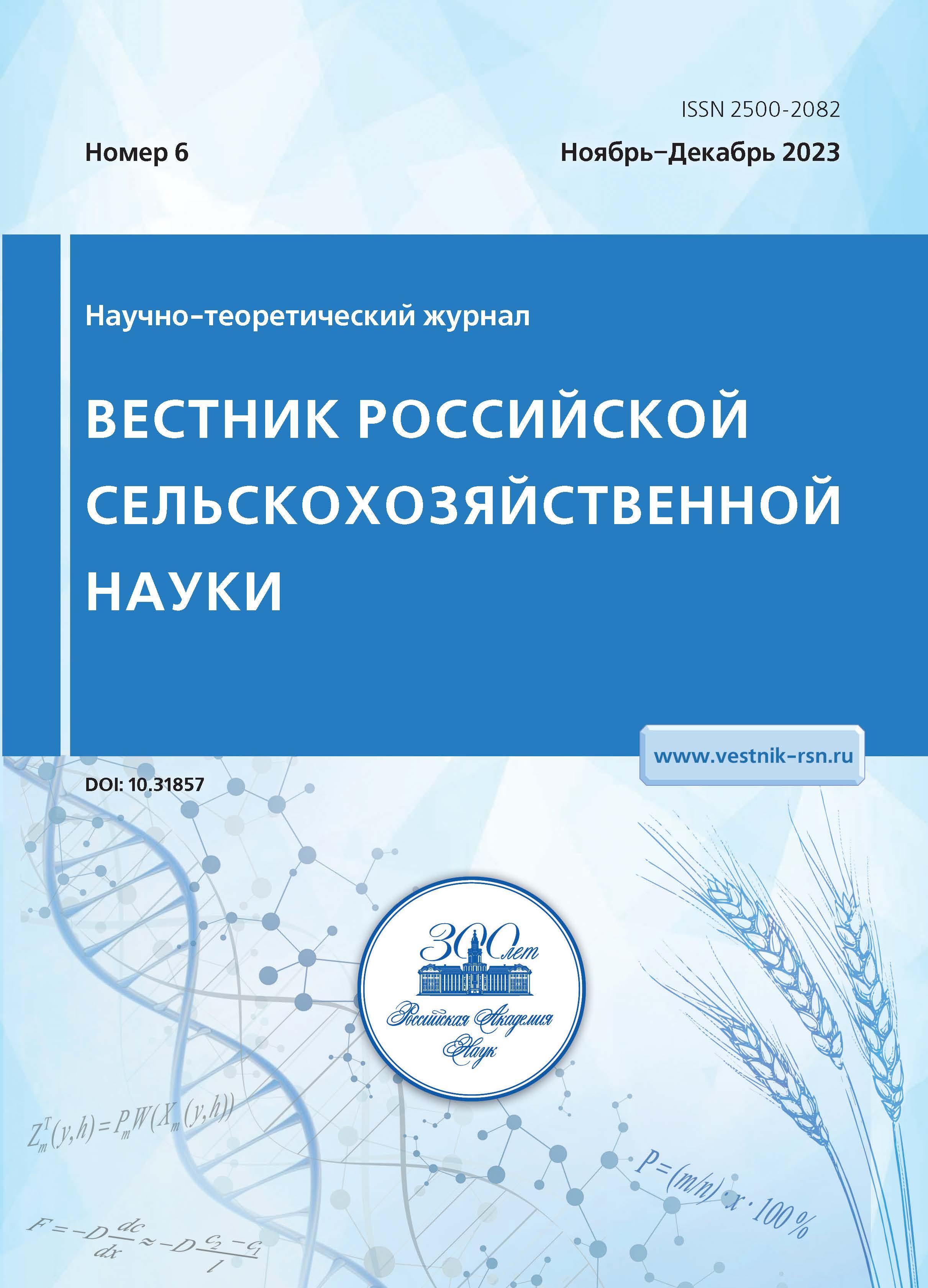Анализ разнообразия и сезонной динамики фауны кровососущих комаров (Diptera, Culicidae) Тавдинского района Свердловской области
- Авторы: Бурашова М.И.1
-
Учреждения:
- Всероссийский научно-исследовательский институт ветеринарной энтомологии и арахнологии - филиал Федерального государственного бюджетного учреждения науки федерального исследовательского центра Тюменского научного центра Сибирского отделения Российской академии наук
- Выпуск: № 6 (2023)
- Страницы: 104-106
- Раздел: Статьи
- URL: https://snv63.ru/2500-2082/article/view/657198
- DOI: https://doi.org/10.31857/2500-2082/2023/6/104-106
- EDN: https://elibrary.ru/WRVAKD
- ID: 657198
Цитировать
Полный текст
Аннотация
В статье приводятся данные о видовом разнообразии и сезонной динамике кровососущих комаров (Diptera, Culicidae) - разносчиков инфекционных и инвазионных заболеваний. В результате исследований за несколько сезонов с 2020 по 2022 год было установлено, что на территории Тавдинского района Свердловской области обитает 11 видов комаров, принадлежащих к родам Anopheles, Aedes и Culiseta. При сравнении численности кулицид за все сезоны выявлена корреляция между гидрологическими, погодными условиями и интенсивностью лёта насекомых. Благоприятным для развития и лёта комаров был сезон 2022 года, в котором обильные осадки способствовали увеличению площади водоемов, необходимых для развития насекомых. Наименьшую численность наблюдали в 2021 году. Низкое количество осадков, сильные морозы в зимнее время, холодная весна и засушливое, жаркое лето способствовали сокращению числа комаров. Результаты исследования позволяют оценить экологию комаров в регионе, их активность в разные сезоны и потенциальную роль в передаче инфекций. Работа имеет важное значение для разработки эффективных стратегий контроля комаров и предотвращения заболеваний, связанных с их укусами.
Об авторах
Маргарита Игоревна Бурашова
Всероссийский научно-исследовательский институт ветеринарной энтомологии и арахнологии - филиал Федерального государственного бюджетного учреждения науки федерального исследовательского центра Тюменского научного центра Сибирского отделения Российской академии наук
Список литературы
- Баранова И.С., Липухин Д.Н. Влияние климатических изменений на географию некоторых кровососущих переносчиков инфекций // В сб.: Климатические изменения и сезонная динамика ландшафтов. Мат. Всерос. науч.-практ. конф.. Екатеринбург. 2021. С. 236-242. doi: 10.26170/KFG-2021-34
- Будаева И.А. Экологические закономерности массового развития и медико-эпидемиологическое значение кровососущих двукрылых насекомых в условиях Среднерусской лесостепи //Актуальные проблемы биологической и химической экологии. 2016. С. 300-304.
- Виноградова Е.Б. Экологические предпосылки расселения кровососущих комаров // Энтомологическое обозрение. 2011. Т. 90. № 4. С. 791-797. ISSN: 0367-1445
- Кудрявцева Т.Ю., Мокриевич А.Н. Участие комаров в циркуляции возбудителя туляремии в природных очагах // ФБУН «ГНЦПМБ» Роспотребнадзора. 2020. С. 34-42. doi: 10.33092/0025-8326mp2020.1.34-25
- Кухарчук Л.П. Экология кровососущих комаров (Diptera, Culicidae) Сибири. Систематика. Новосибирск: Наука, 1980.
- Полторацкая Н.В., Бурлак В.А., Панкина Т.М. и др. О зараженности кровососущих комаров (Diptera; Culicidae) личинками дирофилярий (Spiruridae, Onchocercidae) в городе Томске // Медпаразитология, МПиПБ. 2018. №3. C. 10-15. doi: 10.33092/mp2018.3.10-15
- Рославцева С.А. Роль кровососущих комаров в передаче возбудителей инфекционных заболеваний человека // Пест-Менеджмент. 2009. №. 1-2. С. 42-48. ISSN: 2076-8462.
- Халин А.В., Айбулатов С.В., Пржиборо А.А. Методы сбора двукрылых насекомых комплекса гнуса (Diptera: Culicidae, Simuliidae, Ceratopogonidae, Tabanidae ) // Паразитология. 2021. Т. 55. № 2. С. 134-173.
- Якименко В.В., Рудакова С.А., Василенко А.Г. Лихорадка Западного Нила в Западной Сибири: информационное письмо. 2020. 14 с.
- Ясюкевич В.В., Титкина С.Н., Попов И.О. и др. Климатозависимые заболевания и членистоногие переносчики: возможное влияние наблюдаемого на территории России изменения климата //Проблемы экологического мониторинга и моделирования экосистем. 2013. Т. 25. С. 314-360.
Дополнительные файлы










